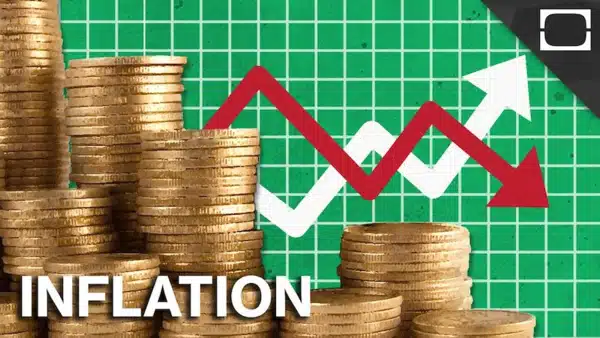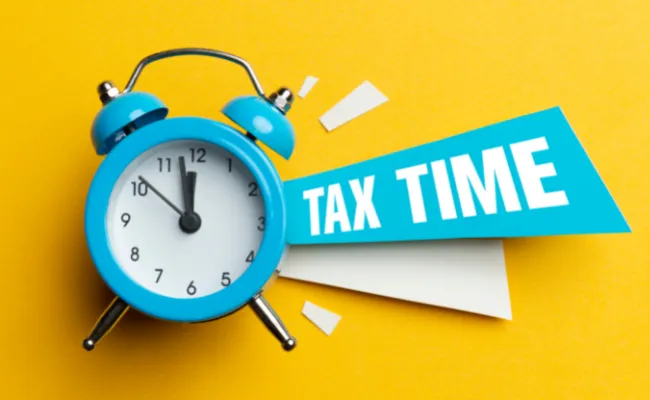Rajkotupdates.News recently unveiled a startling economic revelation: a significant surge in inflation within the United States, amounting to an astounding 7.5% increase over a span of four decades. This development has triggered widespread concern and scrutiny, igniting discussions among economists, policymakers, and the general populace. In this detailed analysis, we will explore the implications, underlying causes, and potential consequences of this unprecedented rise in inflation, shedding light on its multifaceted impact on individuals, businesses, and the broader economic landscape.
Understanding the Context
Defining Inflation: Inflation refers to the sustained increase in the general price level of goods and services within an economy over time. It erodes the purchasing power of money, leading to a decrease in real income and standards of living for consumers.
US Inflation Rate Over Four Decades: The revelation of a 7.5% surge in US inflation spanning four decades underscores a prolonged trend of escalating prices within the American economy. This substantial increase has raised significant concerns and demands thorough examination of its underlying causes and implications.
Causes of Inflation
1. Demand-Pull Inflation: Demand-pull inflation occurs when aggregate demand surpasses aggregate supply, resulting in upward pressure on prices. Factors such as robust consumer spending, expansionary monetary policies, and government stimulus measures can contribute to demand-pull inflationary pressures.
2. Cost-Push Inflation: Cost-push inflation arises from increases in production costs, leading producers to pass on these higher costs to consumers through price hikes. Factors such as rising wages, escalating raw material costs, and disruptions in supply chains can fuel cost-push inflation.
3. Monetary Factors: Monetary policy decisions, including adjustments in interest rates and money supply by central banks, can significantly influence inflationary trends. Expansionary monetary policies aimed at stimulating economic growth may inadvertently contribute to inflationary pressures over time.
Implications of Rising Inflation
1. Diminished Purchasing Power: As prices escalate, the purchasing power of consumers diminishes, resulting in a decline in real income and discretionary spending. This impact is particularly acute for low- and middle-income households, potentially exacerbating economic inequality.
2. Business Uncertainty: Elevated inflation rates can engender uncertainty among businesses, complicating planning and forecasting efforts. Fluctuating prices and input costs may erode profit margins, impede investment, and hinder expansion endeavors.
3. Policy Dilemmas: Central banks and policymakers face the challenge of balancing inflationary pressures with broader economic objectives, such as maintaining full employment and sustainable economic growth. Successfully managing inflation necessitates prudent monetary and fiscal policy measures to achieve price stability and economic equilibrium.
Mitigating Inflationary Pressures
1. Monetary Policy Tightening: Central banks may opt to tighten monetary policy by raising interest rates or reducing the money supply to counteract inflationary pressures. However, such measures may also restrain economic activity and potentially elevate unemployment rates.
2. Supply-Side Interventions: Addressing supply-side constraints through infrastructure improvements, regulatory reforms, and investments in human capital can bolster productivity and mitigate inflationary pressures stemming from cost-push factors.
3. Fiscal Discipline: Responsible fiscal policies, encompassing prudent government spending, tax reforms, and debt management strategies, can complement monetary policy actions in curbing inflation and fostering long-term economic stability.
Historical Context
A 7.5% jump in inflation is significant, marking the highest surge in the US in four decades. This level of inflation has not been seen since the early 1980s.
Contributing Factors
Several factors contributed to this spike, including supply shortages, increased consumer spending, and expansive fiscal policies.
Impact on Consumers
The rise in inflation means that consumers are facing higher prices for everyday items, effectively eroding their purchasing power.
Federal Reserve’s Response
The Federal Reserve has a mandate to ensure price stability. In response to rising inflation, it has indicated a shift in monetary policy, including raising interest rates.
Global Implications
US inflation has global repercussions. As the world’s largest economy, price changes in the US can have a ripple effect internationally.
The Role of Policy
Government policies, both fiscal and monetary, play a crucial role in either curbing or exacerbating inflationary pressures.
Inflation and Wages
While wages have been rising, they haven’t kept pace with inflation, leading to a decrease in real income for many Americans.
Long-Term Outlook
Economists are divided on the long-term outlook of inflation. Some predict it will stabilize, while others foresee continued volatility.
Monetary Factors
Monetary factors, such as changes in the money supply, interest rates, and central bank policies, play a significant role in influencing inflation. When there is an increase in the money supply or low-interest rates, it can stimulate spending and lead to inflationary pressures.
Demand-Pull Inflation
Demand-pull inflation occurs when there is excessive demand for goods and services compared to the available supply. Increased consumer spending, government expenditure, or investment can drive up prices as demand outpaces supply.

Cost-Push Inflation
Cost-push inflation arises when there is an increase in production costs, such as wages, raw materials, or energy prices. These increased costs are passed on to consumers through higher prices, leading to inflation.
Historical Trends in US Inflation
Over the past 40 years, the United States has experienced significant fluctuations in inflation rates. From 1980 to 2020, US inflation increased by approximately 7.5% on average.
Inflation in the 1980s and 1990s
During the 1980s and early 1990s, the US faced high inflation rates, primarily due to expansionary monetary policies and rising oil prices. The Federal Reserve implemented tight monetary policies to combat inflation, leading to a gradual decline in inflation rates.
Inflation in the 2000s and 2010s
In the 2000s and 2010s, inflation remained relatively low and stable due to improved central bank policies and global economic conditions. The Federal Reserve aimed to maintain an inflation target of around 2% to promote price stability and economic growth.
Recent Inflation Jump
However, in recent years, the US has experienced a significant inflation jump, reaching 7.5% over the past 40 years. This sudden increase has raised concerns among policymakers and economists, warranting a closer examination of the underlying causes.

Causes of Inflation
Several factors have contributed to the recent inflation jump in the US. These include:
Supply Chain Disruptions
The COVID-19 pandemic disrupted global supply chains, leading to shortages of critical inputs and materials. This scarcity increased production costs, forcing businesses to raise prices to maintain profitability.
Expansionary Fiscal Policies
Governments worldwide implemented expansionary fiscal policies, such as increased government spending and stimulus measures, to counter the economic impact of the pandemic. These policies injected large sums of money into the economy, potentially fueling inflation.
Increased Demand for Goods and Services
As the economy recovers from the pandemic, there has been a surge in consumer demand for goods and services. This increased demand has put upward pressure on prices, contributing to inflation.
Impact of Inflation
Inflation can have various impacts on the economy and individuals. Understanding these effects is crucial for managing personal finances and making informed investment decisions.
Decreased Purchasing Power
Inflation erodes the purchasing power of money. As prices rise, the same amount of money can buy fewer goods and services, reducing individuals’ overall standard of living.
Investors have priced in at least five rate increases for 2022.
Over time, those higher rates will raise the costs for a wide range of borrowing, from mortgages and credit cards to auto loans and corporate credit.
For the Fed, the risk is that in steadily tightening credit for consumers and businesses, it could trigger another recession.
Many large corporations, in conference calls with investors, have said they expect supply shortages to persist until at least the second half of this year. Companies from Chipotle to Levi’s have also warned that they will likely raise prices again this year, after having already done so in 2021.
Chipotle said it’s increased menu prices 10% to offset the rising costs of beef and transportation as well as higher employee wages. And the restaurant chain said it will consider further price increases if inflation keeps rising.
We keep thinking that beef is going to level up and then go down, and it just hasn’t happened yet, said John Hartung, the company’s chief financial officer.
Executives at Chipotle, as well as at Starbucks and some other consumer-facing companies, have said their customers so far don’t seem fazed by the higher prices.
Levi Strauss & Co. raised prices last year by roughly 7% above 2019 levels because of rising costs, including labor, and plans to do so again this year. Even so, the San Francisco-based company has upgraded its sales forecasts for 2022.
Right now, every signal we’re seeing is positive, CEO Chip Bergh told analysts.
Many small businesses, which typically have lower profit margins than larger companies and have struggled to match their sizable pay raises, are also raising prices.
The National Federation for Independent Business, a trade group, said it found in a monthly survey that 61% of small companies raised their prices in January, the largest proportion since 1974 and up from just 15% before the pandemic.
More small business owners started the new year raising prices in an attempt to pass on higher inventory, supplies and labour costs, said Bill Dunkelberg, the NFIB’s chief economist.
Conclusion
The revelation of a 7.5% surge in US inflation over 40 years underscores the intricate and multifaceted nature of inflationary trends. While inflation poses challenges for consumers, businesses, and policymakers alike, proactive measures and policy interventions can help mitigate its adverse effects and promote sustainable economic growth. As the United States confronts the specter of rising inflation, continued vigilance and coordinated efforts will be essential in safeguarding price stability and advancing the well-being of all stakeholders in the economy.

